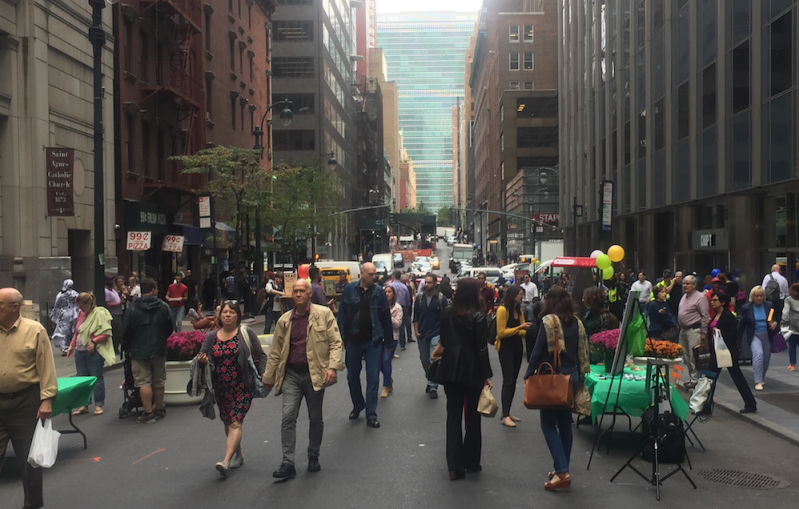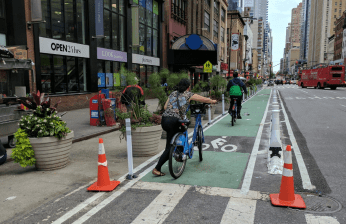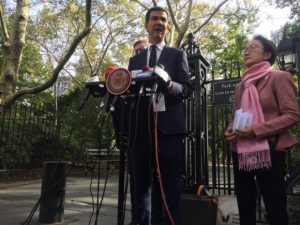It Only Takes a Few Well-Placed Bollards to Make a Midtown Block Safe From Vehicular Assault
Instead of squeezing already cramped sidewalks with row after row of bollards, the city can use far fewer bollards, at significantly less cost, to cork off busy Midtown blocks from car traffic, giving pedestrians much more freedom of movement.

Mayor de Blasio plans to install 1,500 metal bollards along Midtown sidewalks, at a cost of $50 million, to keep pedestrians safe from vehicular attacks.
Basic details like the location of the bollards are still to come, but yesterday’s announcement set off two alarms: the high cost for what should be a relatively straightforward installation, and the sneaking suspicion that the bollards will narrow scarce sidewalk space and hem pedestrians in. While there’s no doubt that NYPD’s janky temporary barriers need to be replaced, it would be a terrible mistake to replace clumsy short-term security theater with clumsy permanent security theater.
Without getting into the weeds of NYC’s absurdly inflated construction costs, there is an easy way to address both issues.
Instead of squeezing already cramped sidewalks with row after row of bollards, the city can use far fewer bollards, at significantly less cost, to cork off busy Midtown blocks from car traffic, giving pedestrians much more freedom of movement.
A good starting point for discussion can be found in the Regional Plan Association‘s Fourth Regional Plan, which recommends a network of car-free streets and “low auto zones” in the busiest parts of Manhattan. RPA identifies several Midtown streets that should be pedestrianized:

City Hall could stretch its bollard budget much farther, getting far more benefits for public safety and public space, by corking off these streets.
NYC DOT has tested out the idea on a small scale. In September, the city set up a car-free trial for an afternoon on a block of 43rd Street near Grand Central Terminal, where pedestrians typically outnumber motorists 16-to-1. People immediately flocked to the new public space (above).
East 43rd Street is set to become the city’s next “shared street,” where motor vehicle access is limited to deliveries and local pick-ups and drop-offs, and pedestrians take priority. But there’s no reason to stop there. Other cities are using movable bollards to restrict vehicle access to downtown streets while maintaining or improving the pedestrian experience.
In New Orleans, the city recently installed bollards as a security measure to cork six blocks of Bourbon Street, reinforcing rules that ban cars at night. The inner two bollards in the picture below can be moved aside to let motor vehicles pass. Each set of four bollards cost $60,000 to install, according to the Times-Picayune.

In Cambridge, England, the city uses retractable bollards to selectively allow access to downtown streets to buses, taxis, and other permitted vehicles, creating a street environment that’s much more conducive to walking and biking:

New York can’t let the threat of vehicular attacks turn into a justification for diminishing public space. To prioritize safety for the hundreds of thousands of people who walk Midtown streets every day, the city needs to control the cars and give pedestrians more freedom.




